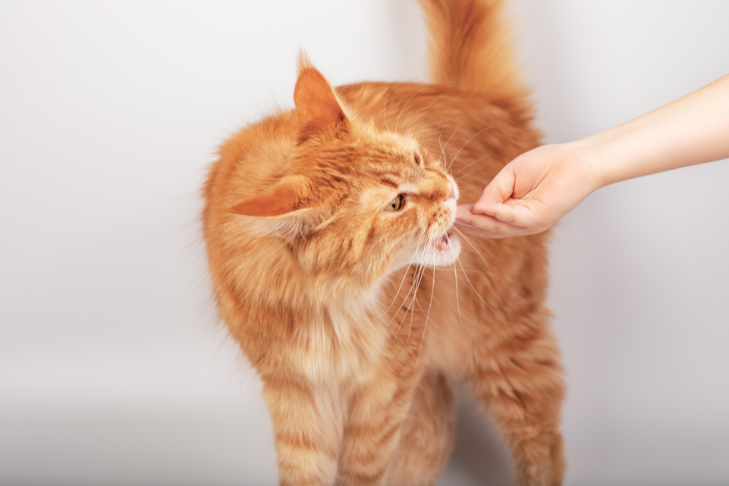Can You Use Cat Treats to Train Your Cat?

One of the most important things you can do as a pet parent is to train your cat.
Training not only teaches healthy boundaries and helps keep your home cleaner—it also protects your cat’s health and strengthens your bond.
While many people think cats are “too independent” for training, that couldn’t be further from the truth. Cats are highly intelligent, and with the right approach—and the right training rewards or cat treats—they can learn everything from good household manners to fun tricks!
Why is Training Your Cat so Important?
Training your cat can make everyday life much easier—and much more enjoyable. A well-trained cat can:
-
Consistently use the litter box
-
Come when called
-
Stay calm during car rides or travel
-
Tolerate grooming and vet visits with less stress
-
Interact positively with family members and visitors
-
Get along better with other pets
- Reduce their impacts on local wildlife
How to Use Cat Treats (and Other Techniques) to Train Your Cat
Ready to start training your cat? Here are some simple tips that can help make the process smoother (and a lot more fun!).
1. Manage Their Mealtime Schedule
If your cat is free-feeding (grazing all day), food might not be a strong enough motivator.
Instead, work with your veterinarian to determine the right amount to feed your cat daily. Then, use a feeding schedule or automatic feeder to control meal times.
When your cat has structured mealtimes, they’ll be more motivated to work for those delicious cat treats during training sessions.
2. Start with Small, Simple Goals
It’s tempting to dive into all the cool tricks you want to teach—but slow and steady wins the race.
Focus on one training goal at a time. For example, start with litter box training for a kitten or crate training for an adult cat. Once your cat masters one skill, move on to the next, like getting comfortable with grooming or meeting new people.
3. Get Others Involved
Socialization is an important part of cat training. Having friends, family members, or other household members participate can help your cat learn to trust and respond to different people.
Plus, getting a tasty treat from someone new is a quick way to win your cat’s trust!
4. Stick to Positive Reinforcement
Unlike dogs, cats are less motivated by praise or petting alone. For most cats, food is the ultimate reward.
If your cat isn’t responding to a treat, try:
-
Switching flavors: Some cats are picky and might prefer chicken, tuna, or salmon-flavored treats.
-
Rewarding immediately: Cats have short attention spans! They need their reward right after they perform the desired behavior.
-
Being consistent: Use the same type of reward every time, and make sure everyone helping with training does the same.
-
Timing it right: Train right before mealtime when your cat is naturally more food-motivated.
5. Gradually Phase Out Treats
Once your cat reliably performs a behavior, it’s time to phase out food rewards slowly.
Instead of stopping cold turkey, replace treats with praise, affection, a favorite toy, or playtime. This keeps the behavior strong without over-relying on snacks.

6. Support Training with Cat CBD
If your cat struggles with stress during training, CBD for cats can be a helpful tool.
Two great options to support a calmer, more focused training experience are:
-
USDA Organic Feline Stress Releaf Calming CBD Oil: Specially formulated for cats, this oil combines full-spectrum CBD with catnip for extra palatability. It also contains ashwagandha, an adaptogenic herb known for promoting relaxation and emotional balance—making it a powerful tool to help reduce training-related stress.
-
Ultra Releaf Liposomes CBD Oil: This advanced formula uses liposomal technology for up to 14x better absorption compared to traditional oils. It's ideal for picky pets because it can be easily mixed into meals without losing effectiveness, helping support calm behavior even in more stressful training environments.
Whether your cat needs a little extra help adjusting to new routines or simply staying focused during sessions, CBD can be a natural, gentle way to set them up for success.
Fuel Your Cat’s Training with Healthy Choices
Just like you carefully research the best cat food, it’s just as important to choose high-quality training rewards and health products for your feline friend.
When selecting products, look for brands that:
-
Use limited, natural ingredients
-
Are free from artificial preservatives, colors, and flavors
-
Are backed by certifications and awards for quality and safety
Feeding your cat nutritious, wholesome rewards—and supporting their wellness with trusted products—can make a big difference. Not only does it help reinforce training, but it also promotes your cat’s long-term health, happiness, and overall well-being.


